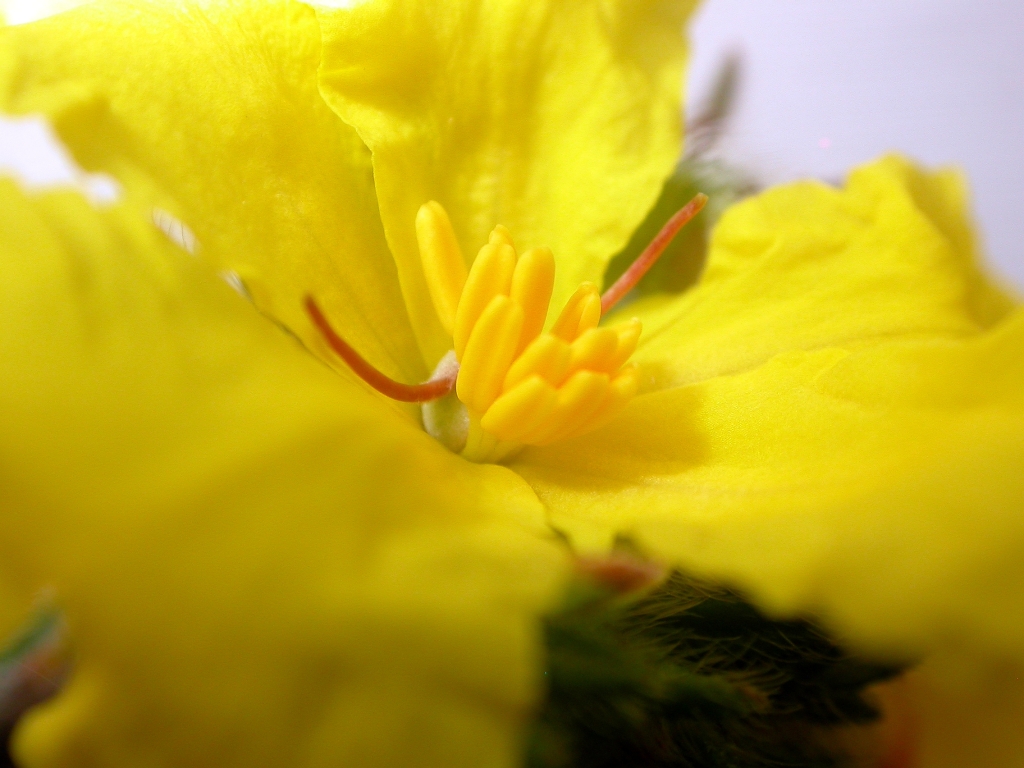Hibbertia sericea
(R.Br. ex DC.) Benth.Erect, spreading or rarely decumbent shrubs 30–70 cm high; branches pubescent. Vestiture of tubercle-based hairs of usually coarser simple hairs over few-branched stellate hairs. Leaves subsessile, elliptic to obovate, 1.8–22 mm long, 0.9–5.1 mm wide; puberulous to pubescent above, tomentose below; acute to obtuse with central ridge not obviously continued into apex; margins revolute. Flowers sessile, in terminal clusters of 1–7(–12), with reduced leaf-like bracts 3.5–10.6 mm long, all obscured by surrounding bract-like leaves that are usually broader and more discolorous than lower leaves; sepals 5.1–7.7 mm long, unequal, tomentose; petals obovate, 5.5–11.3 mm long, bright yellow; stamens 8–14 in one cluster; filaments free to slightly connate; carpels 2, tomentose to villous. Flowers Aug.–Dec.
LoM, MuM, Wim, GleP, Brid, VVP, VRiv, GipP, OtP, WaP, Gold, CVU, GGr, DunT, NIS, EGL, EGU, WPro, HSF, HNF, OtR, Strz. Mostly occurs in coastal or near-coastal areas, but also with inland occurrences in the north-west on sandy soils and the Grampians.
Hibbertia sericea is highly variable, and some forms are difficult to distinguish from H. crinita. These two species are generally separated by the vestiture of the upper leaf surface, the length of the central ridge on the lower leaf surface, and the density of hairs on the inner surface of sepals. Hibbertia crinita has a densely stellate hairy upper leaf surface, with scattered longer, silky, simple hairs that are often restricted to the margins, the central ridge extends to the leaf apex, and the inner surface of the sepals usually with hair covering more than half the surface, whereas H. sericea has discolorous leaves that are often only sparsely hairy above, mostly with just long simple hairs on the upper leaf surface, the central ridge does not extend to the leaf apex, and usually only to one third of the inner surface of sepals are hairy. However, stellate hairs may sometimes be present on the upper leaf surface of some forms of H. sericea, but these tend to intermixed with short, coarse simple hairs. Also the central vein can approach the apex in some forms of H. sericea. A combination of all these characters over a range of leaves and sepals needs to be considered when identifying these species.
Three informal entities (previously recognised at varietal rank) have been noted in this species, “sericea”, “densiflora”, and “scabridifolia”. All three entities occur in Victoria. However, these are not currently formally recognised as numerous intermediates between these entities have been observed (Toelken 2000). “Densiflora” is largely recorded from coastal areas from Melbourne eastwards, with a few records from near Portland in the west of the State. This entity may be distinguished by the enlarged central ridge of the leaf undersurface that almost extends to the apex and is at least twice the width of the revolute margins, which largely conceals the lower leaf surface. “Sericea” occurs in near coastal areas in western Victoria and Port Phillip, with isolated records in the Grampians. It has relatively long leaves (5–8 times longer than wide), often with recurved to slightly revolute margins, exposing the lower surface of leaves, and the leaf-like bracts exceed or are as long as the calyx. “Scabridifolia” is mainly in the west of the state in mallee woodland, and is distinguished by the short leaves with revolute margins, and the short bract-like leaves that do not extend more than half way up the calyx.
Toelken, H.R. (1996). Dilleniaceae. In: Walsh, N.G.; Entwisle, T.J., Flora of Victoria Vol. 3, Dicotyledons Winteraceae to Myrtaceae, pp. 300–313. Inkata Press, Melbourne.
 Spinning
SpinningToelken, H.R. (2000). Notes on Hibbertia (Dilleniaceae) 3. H. sericea and associated species.. Journal of the Adelaide Botanic Gardens 19: 1–54.

